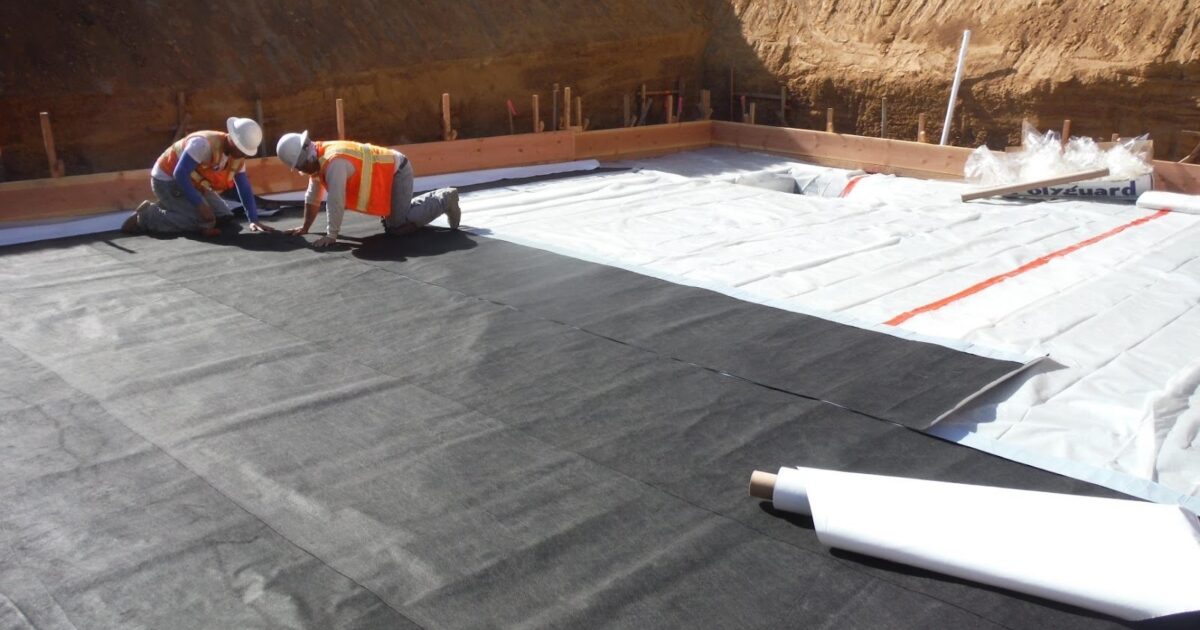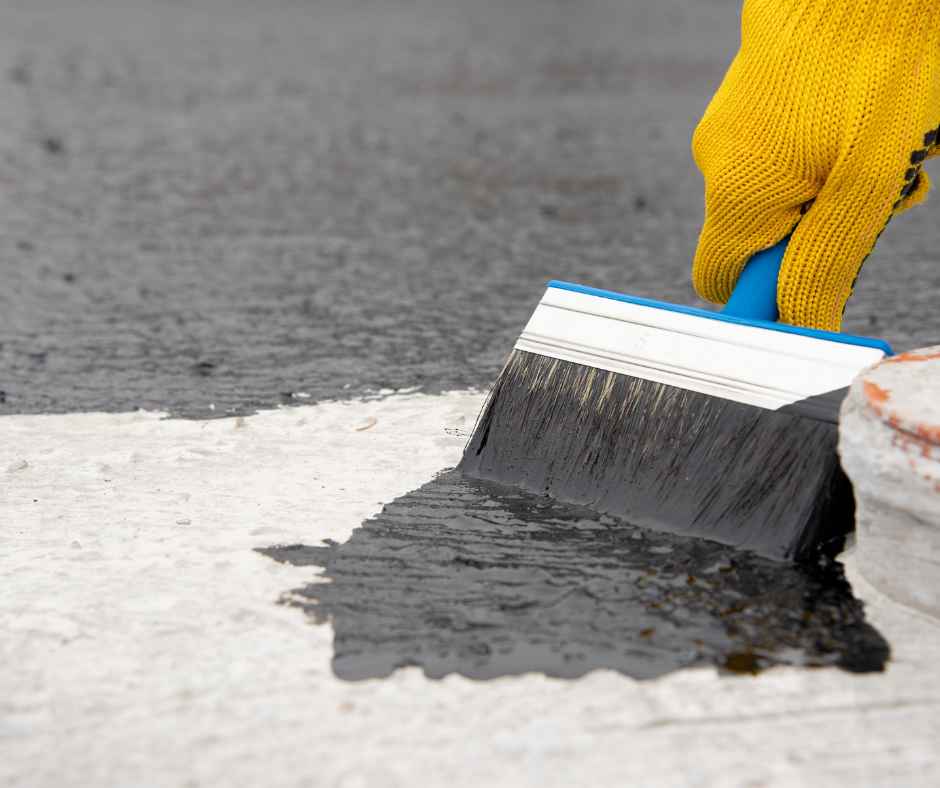5 Common Mistakes About Water Solutions Omaha You Should Avoid
Wiki Article
Why Waterproofing Is Essential for Lasting Structures: an In-Depth Evaluation
Waterproofing plays a necessary function in the longevity of frameworks. It acts as an obstacle against dampness, which can bring about considerable concerns like mold and mildew and degeneration. Comprehending the various waterproofing methods and their effects is crucial for homeowner. The consequences of overlooking this element can be extreme. Discovering these elements exposes not just the necessity of waterproofing, but likewise its broader influence on residential or commercial property worth and safety.Recognizing Waterproofing: Meaning and Importance
Waterproofing functions as an important obstacle versus moisture invasion, guarding structures from prospective damages. It encompasses various techniques and products designed to avoid water infiltration right into structures, guaranteeing durability and capability. The importance of waterproofing can not be overstated, as it secures versus a series of issues, including mold growth, damage of products, and structural weakening.Effective waterproofing services can consist of membrane layers, finishes, and sealers, each tailored to specific atmospheres and structural styles. By developing a protective layer, these options aid maintain a completely dry interior, which is critical for the wellness of passengers and the preservation of residential property value.Moreover, investing in waterproofing at the construction phase is significantly a lot more economical than attending to water-related problems after they develop. Comprehending the principles of waterproofing is vital for architects, builders, and residential or commercial property proprietors aiming for resilient, resilient frameworks that stand up to the test of time and environmental difficulties.
The Effect of Water Damages on Architectural Honesty
Water damage presents substantial risks to structural integrity, mainly via the development of mold and mildew and mildew. These organisms not just endanger indoor air quality yet additionally result in material destruction over time. Additionally, long term exposure to dampness can weaken structural components, increasing the possibility of collapse or failure.Mold and Mildew Growth
Moisture intrusion positions a considerable danger to the architectural stability of structures, bring about the spreading of mold and mildew and mold. These fungis grow in wet atmospheres, commonly settling in surprise locations such as wall surface tooth cavities, under flooring, and in ceilings. Their growth not only develops unsightly discolorations and undesirable odors yet additionally adds to a decrease in indoor air high quality, positioning health risks to occupants. Mold and mildew and mold can jeopardize materials like timber and drywall, resulting in additional wetness retention and developing a cycle of damage. Early discovery and removal are important to stop substantial growth, emphasizing the requirement of effective waterproofing measures. Addressing dampness problems promptly can shield both the health and wellness of residents and the long life of the structure.Architectural Weakening Dangers
Uncontrolled dampness invasion can lead to serious structural weakening, endangering the integrity of structures. Water damage commonly affects fundamental components, such as light beams, columns, and walls, causing compromised load-bearing capability. Prolonged exposure to dampness can cause products like wood to rot and steel to wear away, compromising their architectural properties. This degeneration may result in splits, bowing, or perhaps disastrous failings if left unaddressed. Water Solutions. Additionally, water infiltration can undermine the soil underneath structures, creating settling or changing that further intensifies structural threats. Therefore, executing efficient waterproofing options is crucial in preserving a building's structural stability, protecting against expensive repair work, and making certain safety and security for owners. Appropriate upkeep and proactive procedures are crucial in reducing these considerable threats related to water damagesSorts Of Waterproofing Techniques and Materials
Waterproofing techniques and products play an important function in safeguarding structures from water damages. Key techniques include membrane waterproofing, which provides a physical obstacle; fluid waterproofing options that develop a seamless layer; and cementitious waterproofing choices known for their resilience and ease of application. Understanding these various strategies is crucial for picking one of the most ideal approach for specific building and construction needs.Membrane Layer Waterproofing Methods
Membrane layer waterproofing methods are important for protecting frameworks from the harmful impacts of water seepage. These approaches include the application of waterproof membrane layers that create an obstacle versus wetness. Both main kinds of membrane layer systems are sheet membranes and liquid-applied membrane layers. Sheet membranes, commonly made from materials such as rubberized asphalt or thermoplastic, are built and can be presented and complied with surface areas. On the other hand, liquid-applied membrane layers are used as a liquid and cure to create a seamless layer. Both kinds offer flexibility and durability, dealing with numerous applications, consisting of roof coverings, basements, and structures. Correct setup and upkeep of these membrane layers assure long-lasting defense, enhancing the lifespan and honesty of the structures they secure.Fluid Waterproofing Solutions
Fluid waterproofing options stand for a versatile choice to standard membrane layer systems. These options normally include the application of liquid finishings that treat to form a smooth, sturdy obstacle versus water seepage. Numerous kinds of fluid waterproofing materials are available, including polyurethane, bitumen, and acrylic-based solutions. Each kind uses one-of-a-kind homes, such as versatility, adhesion, and you can try these out UV resistance, making them suitable for varied applications. The application procedure commonly includes spraying or rolling the liquid onto surface areas, enabling protection of complex forms and details, which decreases possible weak factors. Fluid waterproofing options are particularly advantageous for areas with movement, such as joints and splits, as they can accommodate architectural changes without compromising integrity, making sure resilient protection for structures.
Cementitious Waterproofing Options
Numerous cementitious waterproofing choices are offered, supplying effective solutions for numerous building and construction requirements. These systems usually contain a blend of concrete, sand, and additives, making them appropriate for both exterior and interior applications. Among the preferred choices are crystalline waterproofing items, which respond with moisture to create a waterproof barrier within the concrete matrix. In addition, flexible cementitious finishes provide improved flexibility, accommodating minor architectural movements without jeopardizing the waterproofing honesty. It is likewise usual to make use of cementitious sealants for joints and fractures, ensuring detailed security versus water seepage. In general, cementitious waterproofing alternatives are valued for their resilience, simplicity of application, and compatibility with different substrates, making them a favored selection in modern-day construction practices.Long-Term Expense Cost Savings Via Effective Waterproofing
Purchasing efficient waterproofing solutions can considerably lower long-term costs for building proprietors and programmers. By avoiding water invasion, these remedies reduce damages to architectural elements, minimizing the need for expensive repairs and upkeep over time. Waterproofing additionally safeguards interior finishes and furnishings, minimizing replacement costs and enhancing the overall lifespan of the property.Moreover, effective waterproofing can cause energy savings by enhancing insulation and reducing humidity-related issues. This results in reduced cooling and heating costs, adding to a more lasting financial version for residential property management.Additionally, the application of waterproofing procedures can improve home worth by guaranteeing a completely dry, safe, and sturdy atmosphere. While the preliminary financial investment in waterproofing might appear considerable, the lasting monetary advantages far outweigh the upfront prices, making it a sensible decision for any individual involved in building or residential or commercial property management.
The Duty of Waterproofing in Building Regulations and Laws
Waterproofing plays a significant function in building codes and laws, reflecting its relevance in contemporary building techniques. These codes are created to ensure safety, durability, and sustainability in buildings, stressing the demand for reliable waterproofing measures. Different national and neighborhood building regulations outline specific needs for waterproofing products and methods, especially in areas prone to water intrusion, such as cellars and foundations.Compliance with these policies not only protects frameworks from moisture-related damages however also safeguards public health by preventing mold and mildew development and structural instability. Inspectors frequently evaluate waterproofing elements throughout the building procedure to guarantee adherence to developed standards. As climate adjustment boosts the frequency of extreme weather condition events, the role of waterproofing in building ordinance is expected to advance, possibly leading to more stringent regulations. In general, the integration of waterproofing in regulatory frameworks highlights its essential role in attaining long-lasting, resistant frameworks.Case Studies: Effective Waterproofing Solutions
Successful waterproofing solutions have actually been implemented across various jobs, showcasing innovative strategies that improve structural stability and long life. One noteworthy instance is the renovation of the historic Smith Tower in Seattle, where sophisticated membrane layer systems were used to shield the structure from water intrusion. This technique not just maintained the structure's visual yet also extended its lifespan.In another situation, a big industrial structure in Miami utilized crystalline waterproofing technology, which reacts with wetness to develop a barrier against water. This service verified efficient against the city's high humidity and heavy rainfall.Additionally, a bridge in San Francisco went through a considerable waterproofing treatment using epoxy finishings, which considerably minimized upkeep expenses and enhanced toughness. These study show the efficiency of tailored waterproofing techniques in varied atmospheres, emphasizing the relevance of picking appropriate methods to deal with particular difficulties and ensure the durability of structures.Ideal Practices for Implementing Waterproofing Approaches
Carrying out efficient waterproofing techniques requires cautious planning and adherence to ideal techniques - Landscape drainage Omaha. Initially, it is essential to perform a complete website assessment to determine prospective areas of water access. This assessment informs the choice of ideal materials and methods tailored to details environmental problems. Utilizing high-grade, resilient waterproofing membrane layers can significantly enhance security versus moisture.Additionally, proper installment methods are important; guaranteeing that surface areas are tidy and totally free from impurities promotes ideal attachment. Normal maintenance checks should be arranged to identify any type of signs of wear or damages, allowing for prompt repairs.Moreover, integrating water drainage systems can efficiently handle water drainage, avoiding buildup around frameworks. Educating all personnel associated with building and construction concerning waterproofing requirements further assurances uniformity and adherence to best techniques. Inevitably, a proactive approach to waterproofing can significantly prolong the life expectancy of frameworks and minimize lasting upkeep pricesFrequently Asked Questions
How Does Waterproofing Affect Energy Efficiency in Buildings?
Waterproofing significantly improves energy efficiency in buildings by stopping moisture invasion. This lowers the demand for cooling and heating, keeps constant indoor temperatures, and inevitably reduces power usage, adding to long-lasting sustainability and expense savings.Can Waterproofing Be Applied to Existing Frameworks?
Waterproofing can indeed be used to existing frameworks. Different techniques, such as membrane layers, coatings, and sealants, enable homeowner to enhance protection against moisture, thus extending the framework's honesty and decreasing potential damages in time.What Are the Signs of Inadequate Waterproofing?
Indicators of insufficient waterproofing include water stains on wall surfaces, mold growth, peeling off paint, mildewy smells, and moisture in basements - Sump pump installation & replacement Omaha. These indicators suggest possible try these out structural damage and the demand for instant focus Visit Your URL to stop further degenerationHow Commonly Should Waterproofing Be Checked or Preserved?
Waterproofing needs to be examined a minimum of annually, specifically in areas with heavy rainfall or rising and falling temperature levels. Routine upkeep guarantees very early detection of issues, promoting architectural honesty and lengthening the life expectancy of the structure.Are There Eco-Friendly Waterproofing Options Available?
Environment-friendly waterproofing alternatives are progressively offered, making use of sustainable materials such as bio-based polymers and natural sealers. These choices not only safeguard structures however likewise minimize ecological influence, appealing to environmentally mindful building contractors and residential property proprietors.Report this wiki page